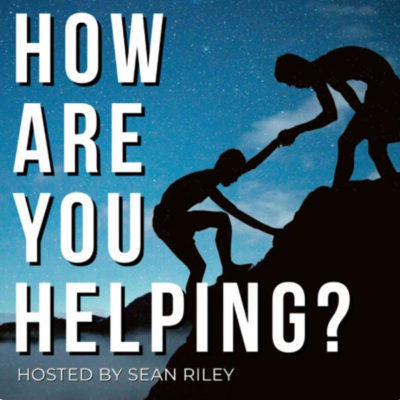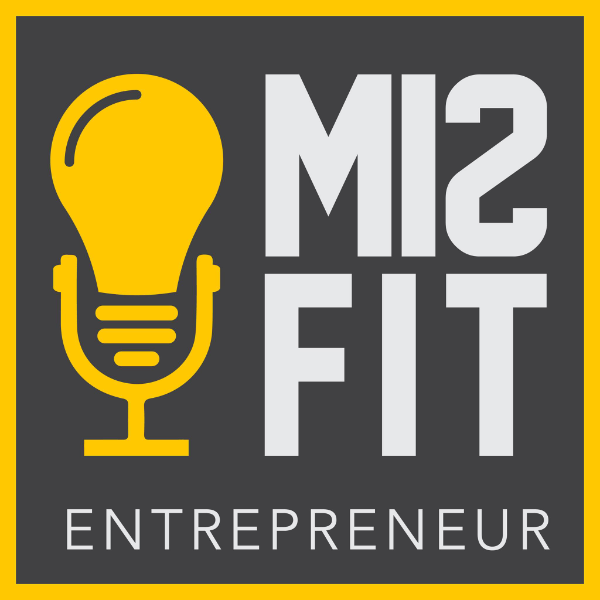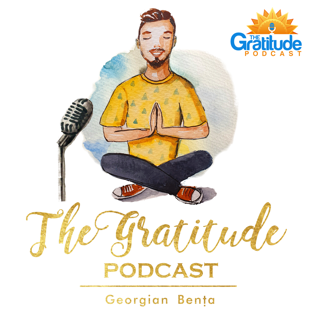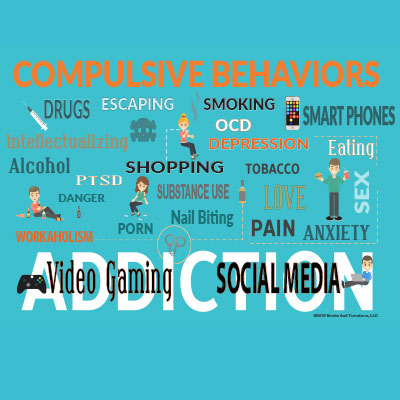Has Addiction Taken Control Over Someone’s Life in Your Workplace?
2020 has been a year of change, uncertainty, and fear. Many individuals have difficulty coping with the rapid changes happening around them, and often times they turn to substance abuse to suppress their feelings and emotions rather than seeking the appropriate help they need. As of August 2020, The American Medical Association found that more than 40 states reported a rise in opioid-related deaths, along with ongoing concerns for those with a mental health or substance use disorder.
With the recent reopening of many businesses, there has been an increase in cases of addiction in the workplace. For some employers and employees, the occasional drink or substance use has turned into an addiction that has now been introduced into their work environment. A recent article published by CNBC bylined by Rachel Graham and John Edmonson of Healing Springs Ranch discusses the signs of addiction, how to reach out, and the proper way to offer assistance to those who are suffering.
The signs of addiction can differ depending on the individual and the addiction. Addictions can be triggered by secrets, relationships, work stress, health issues (both physical and mental), big life changes, and other traumatic situations. When triggered it can last for hours, days, months, and years if you don’t have the appropriate coping skills to navigate your way out.
During these trying times, many individuals have lost their sense of purpose and reason. In their mind, there was no light at the end of the tunnel. If you know someone who is struggling with addiction it’s important to reach out so they can seek the help they need and rediscover their purpose in life.
When approaching someone with the topic of addiction it’s important to show concern rather than accuse. Express your concern with their change in mood and behavior, and lack of drive that you once saw in them. Offer them solutions and resources that can get them back on their feet. There are plenty of resources that they can turn to for addiction recovery.
As uncomfortable as these situations can be remember you’re doing it for all the right reasons. No one should have to suffer in silence. Everyone deserves the chance at a meaningful life, and by taking this first step you are leading them toward the path of discovering how meaningful their life can truly be.
Do you know someone who needs help starting their healing process? As part of the Evolve and Transform mission, we have partnered with Life Works Wellness an organization that creates optimal individual and family system performance through hybrid intensives, training programs, and workshops. To learn more check out our Life Works Wellness website or e-mail us at info@lifeworkswellness.com.
Has Addiction Taken Control Over Someone’s Life in Your Workplace? Read More »
Dave Lukas, The Misfit Entrepreneur_Breakthrough Entrepreneurship
Be Your True Self with Rachel Graham
Dave Lukas, The Misfit Entrepreneur_Breakthrough Entrepreneurship Read More »
How to Stay Healthy and Positive in the Dark Times
Out of the darkness comes the light. The Phoenix rises out of the ashes. 2020 has been the most tumultuous year of darkness and ashes of recent memory, how have you found your purpose in these dark times?
So far, this 2020 has been replete with the unexpected and unknown, with crisis and change. Understandably, with crisis like these comes fear and anxiety.
What’s the best way to survive these unprecedented times?
Critical for the survival of any crisis is resilience, optimism, hope, and the ability to seek the ‘silver lining’ within the darkest times. Remembering that we are all in this together helps us stay positive and hopeful. When we recognize that our global humanity relies on our individual compassion, kindness, and awareness of others, we will prevail and get through this together.
The best ways to stay positive during the COVID-19 pandemic.
- Use technology to stay connected virtually. There are many platforms that can be used to meet virtually, even when we can’t meet in person. Businesses, groups, family, and friends utilize these virtual rooms for a command center, check-ins, on-the-fly meetings, and other office and face-to-face interactions.
- Use the forced ’shut down’ to learn something new and celebrate each small victory of accomplishment
- Connect and be present with family
- Focus on the future and imagine all that good that can come from these strange times
- Take breaks often to break up the monotony and move around
- Tackle a home or personal project you have been putting off
- Bond with your pets by playing with them, walking them, etc.
- Get still and spend time with yourself strategizing changes you need to make, goals you want to set, etc.
- It is ok to feel bored at the time. Don’t try to medicate or distract yourself. Sitting with boredom can reveal some creative ideas too.
What can you do to take care of yourself and remain hopeful?
- Exercise helps to create happy hormones, improving your mood.
- Be mindful of your thoughts, stay positive and look for the good in everything
- Surround yourself with positive and supportive people
- Disconnect from news and social media allowing the space you need to filter out what is not useful
- Remain resilient and know that you are equipped to handle whatever comes your way
- Laugh often
- Be kind to those around you
- Do what you can to support your local businesses and neighbors
Check-in with your people often. Sometimes it will be you who needs support and there will be times when you are there to support your people. I have successfully made it through my bad days one hundred percent of the time. While there have been some times of great pain, there was always great reformation that resulted. Through these tough times, like the tough times before, the way I survive and thrive is through remaining kind, supportive, positive, and holding space for each other to be the unique and beautiful individuals that we are and extending grace and compassion to others as well as myself.
How to Stay Healthy and Positive in the Dark Times Read More »
Have You Ever Wondered What The Very Real And Direct Correlations Are Between Corporate Leadership Development And Addiction?
Having gone through her own personal journey as a family member of a loved one who struggled with unresolved trauma, mental health, and addiction, Rachel discovered her own purpose. She now works tirelessly to remove the stigma around addiction and compulsive behaviors. Just as her experience birthed her life purpose, she encourages others to discover their purpose through their natural gifts or skills and individual experiences.
Through Rachel’s corporate experience and her work in recovery, she identified a correlation between the two. The correlation between success in leadership development and recovery achievement comes when individuals are empowered to make and embrace the decision to change.
‘You can’t Level-Up if you are tethered down”- Rachel Graham
Whether your goal is corporate leadership development or recovery, they both share a common human experience as we are all hardwired for connection and community- essential for living life ‘all in’. Regardless of age, sex, race, language, religion, or ethnicity, we all bleed red, have belly buttons, feelings, and share a human life experience.
There are more similarities between corporate leadership development and recovery than there are differences. Both start with the election to create a better version of self. The decision to better yourself is smart, demands a person to ‘dig deep’, to be resourceful, and to creatively craft the person you will become.
Both recovery and leadership development demand the ability to investigate new territory, to pioneer new ideas and innovate new ways of thinking. Leadership development and recovery can defy limits in designing a new life experience.
Some similar conditions for both recovery and corporate leadership are:
The need to define priorities through developing and communicating achievable and actionable goals.
- Prioritizing smart decisions and actionable steps resulting in a successful today and tomorrow.
- Identify, in advance, your support groups, mentors and positive influencers.
- Embrace positive actions, communication and acknowledge and/or correct mistakes.
In recovery and corporate leadership, personal ownership is essential. To be successful in both, there must be an alignment of goals, a monitoring of performance, and personal accountability. Contact Rachel Graham to learn firsthand how her personal experiences revealed the correlation between recovery and corporate leadership development.
Do You Find Yourself Tumbling Down the Rabbit Hole? If the answer is Yes, ARCH™ is Your Way Out.
So, you are tumbling, head over heels down the Rabbit Hole, you are aware, and you know you do not want to continue. Like most of us, you may not know how to you get out. I have developed a system called ARCH™.
The acronym ARCH and coined method make it an easy tool to remember. Just like in architectural terms, where an ARCH represents a safe way to support weight, by utilizing the ARCH method, individuals are supported with healthier coping mechanisms.
What is ARCH? And how does it work?
A–Awareness: Admittingly, it is difficult to know when your subconscious programming is running in overdrive and the first step out of the Rabbit Hole is to recognize that you are approaching or on the edge in the first place.
R– Root Cause: To change behaviors, you must identify the root cause that supports the triggers. The trigger can often put us in the hole, however, there is an underlying reason attached.
C–Change: To navigate the rabbit hole, it requires you to change your behavior and incorporate new tools. Examples: ending toxic relationships, exercising when stressed, leaning on a trusted confidant, modifying your diet, and ensuring quality sleep to name a few.
H–Heal: The Rabbit Hole stems from underlying pain. Once you identify the root cause above you can heal the wound. Healing may require psychotherapy, support groups, and education on the issues. Forgiveness of self or others is often a healthy healing tool.
ARCH makes it easy to remember the steps needed to heal and within these steps, there is work to be done. Trauma creates triggers that are inevitably followed by big emotions. Unless the emotions are processed successfully when the trauma occurs, the pain is absorbed and becomes stuck in the mind and body. The mind has no time continuum and therefore cannot differentiate an old trauma from an event in the present time. A trauma locked within the mind and body continues to affect our lives unconsciously until we become aware of it and do the work to heal it.
Discovering the root cause that lives within our unconscious mind can be tricky. Uncovering painful or sad emotions, caused by past trauma is not an easy thing to do.
There are times it may be difficult, unsafe, or impossible to confront offenders. It is also painful to revisit these emotions that are a result of the buried trauma. Though difficult to address the root cause of trauma, it is equally damaging to ignore the wound, as left unattended, it negatively impacts your life in your relationships, career, happiness, and health.
Once you discover the root cause of your trauma, the change begins when you process and heal it in your conscious mind. There are transformative growth opportunities within post-traumatic work. This work is most often done with the support of a trained professional. Other supportive activities include self-care around your diet, rest, exercise, and the support of your trusted confidants.
I am a speaker, business leader, and life coach. I share my story and skills that I have learned in my life to educating people, business leaders, students, and professionals on how to transform and better their own life’s purpose through their skills and individual experiences. There are too many of us who go coast through life, and we don’t really understand why we are here or what are we supposed to be doing with ourselves. I am encouraging you to subscribe and follow my YouTube channel. I am committed to finding meaning and purpose through life’s challenges for you!
Are you struggling with life’s challenges? Do you need help find your meaning and purpose? I would love to hear from you.
rachel@evolveandtransform.me 214.505.5598
Rachel Graham of Evolve and Transform Announces the Release of her TEDxAndrews Talk
MCKINNEY, Texas, May 5, 2020,/PRNewswire/ — Rachel Graham of Evolve and Transform Inc. recently spoke at the TEDxAndrews event held on January 25, 2020. The TEDx Talk has recently been released for the public to view: Why Addiction is Everyone’s Disease.
“I am so thrilled to finally get the chance to share my TEDx Talk with everyone. My personal mission is to educate people, business leaders, students, and professionals to remove the stigma around addiction and compulsive behaviors (of which we all have) while encouraging the audience to find their own purpose through their skills and individual experiences,” said Rachel Graham, President, of Evolve and Transform and President and Co-founder of Healing Springs Ranch.
Launched in 2009, TEDx is a program of locally organized events that bring the community together to share a TED-like experience. Some of the best talks from TEDx events have gone on to be featured on TED.com and garnered millions of views from audiences across the globe.
This is the inaugural TEDxAndrews event in the Waccamaw region in South Carolina. It is important to this community because, too often, small, rural communities are not included in global conversations. However, the Town of Andrews has set out to prove that, not only do small towns deserve to be included in global conversations, but we have beautiful, complex, innovative, exciting, and vital stories to share.
“In recognition of ‘the changes-makers’ and the impact they are having in Andrews and small, rural communities like it all around the world, the theme for the very first TEDxAndrews event is ‘Manifest Destiny.'”
– Danisha L. McClary, Organizer
About TEDx, x = independently organized event
In the spirit of ideas worth spreading, TEDx is a program of local, self-organized events that bring people together to share a TED-like experience. At a TEDx event, TED Talks video and live speakers combine to spark deep discussion and connection in a small group. These local, self-organized events are branded TEDx, where x = independently organized TED event. The TED Conference provides general guidance for the TEDx program, but individual TEDx events are self-organized. (Subject to certain rules and regulations.)
About TED
TED is a nonprofit organization devoted to Ideas Worth Spreading, often in the form of short talks delivered by leading thinkers and doers. Many of these talks are given at TED conferences, including our annual gathering in Vancouver, as well as TEDWomen, intimate TED Salons and thousands of independently organized TEDx events around the world. Videos of these talks are made available, free, on TED.com and other platforms. Audio versions of the talks from TED2019 are published to TED’s podcast TED Talks Daily, available on all podcast platforms.
TED’s open and free initiatives for spreading ideas include TED.com, where new TED Talk videos are posted daily; TEDx, which licenses thousands of individuals and groups to host local, self-organized TED-style events around the world; the TED Fellows program, which selects innovators from around the globe to amplify the impact of their remarkable projects and activities; the Audacious Project, which surfaces and funds critical ideas that have the potential to impact millions of lives; TEDSummit, which gathers the most engaged members of the global TED community for brainstorms, discussions, performances, workshops and an eclectic program of mainstage talks; and the educational initiative TED-Ed. TED also has a growing library of original podcasts, including The TED Interview with Chris Anderson, WorkLife with Adam Grant, TED en Español and Sincerely, X.
Follow TED on Twitter at http://twitter.com/TEDTalks, on Facebook at http://www.facebook.com/TED, on Instagram at https://instagram.com/ted and on LinkedIn at https://www.linkedin.com/company/ted-conferences.
About Evolve and Transform
Rachel Graham is health entrepreneur, leadership coach and empowering optimist dedicated to educating people, business leaders, students and professionals to find their own meaning and purpose through life challenges, skills and individual experiences by understanding the underlying, and often limiting, behaviors that impede optimal performance personally and professionally. Rachel is an active and contributing member of the Young Presidents’ Organization (YPO) and she is a board member of the Travis Frederick’s Blocking Out Hunger Foundation and Executive Board for the Corey Kluber Family Foundation, among other philanthropic organizations. She is also a Executive Board member for Life Works Foundation and Co-founder of Life Works Wellness. She has been interviewed and featured in various publications, such as Inc Magazine throughout her career, including but not limited to, Inc. 500, Plaid for Women, Stagen Leadership Academy member story, featured on the Coast to Coast Recovery radio broadcast and Coffee with Claire Podcast.
About Healing Springs Ranch
Tucked away on 80 acres of beautiful and serene lakefront property north of the Dallas Metroplex, HSR offers a truly Integrated Addictions Model, which addresses the underlying issues and unresolved trauma behind most, if not all, self-defeating addictive patterns and co-occurring symptoms and diagnoses. As an industry leader, HSR is actively involved in conducting on-going research and publication. HSR’s mission is to provide more integrated treatment by offering innovative and cutting-edge therapeutic modalities. HSR currently offers ETT ® (Emotional Transformation Therapy), Trauma Model Therapy, and the BALM ® (Be A Loving Mirror) family recovery program. Through research, education and quality services, HSR strives to raise the bar for best practice standards, matching the advances in science and technology to address this national epidemic in both the mental health and addiction fields.
Life Works Wellness (LWW) and Life Works Foundation (LWF) (both sister companies to Healing Springs Ranch) are part of the Elevate Global Partners family of wellness companies. Life Works Wellness (LWW) is a new company focused on helping individuals with life balance, optimal performance, purpose, healthy communication skills, and general personal growth. LWW reaches a broad audience with this powerful mission of a healthy lifestyle and balance for individuals, families, and corporate teams.
Life Works Foundation (LWF) was created to benefit all ages, groups, and professionals to create a greater sense of life purpose and satisfaction. The goal of LWF is to improve individuals’ mental and physical health by providing preventative measures and treatment. These include but are not limited to heart disease, cancer, chronic pain, anxiety, addiction, suicidal ideation, PTSD (also referred to as PTSI), and depression, etc. The Foundation focuses on target groups in areas such as productivity, academic and athletic performance, personal and professional relationships, and work-life balance.
orna Stegall, Media Relations
817.807.2257
Rachel Graham of Evolve and Transform Announces the Release of her TEDxAndrews Talk Read More »
Why Addiction Is Everyone’s Disease
Statistics show that 85 out of every 100 people either personally struggle with or know someone who struggles from addiction
I recently had the privilege to speak at TEDxAndrews on “Why Addiction Is Everyone’s Disease”.
We all have compulsive behaviors we use as a coping mechanism when we feel stressed, tired, angry, happy, nervous etc.. Examples of these behaviors might be nail-biting, overspending, underspending, overeating, drinking, drugging, worrying, smoking, pornography, video gaming, working, gambling, etc..
The difference between a compulsive behavior and addiction is the ability to control the use. Compulsive behaviors can become an addiction when the use is causing you relationships, health, legal, and/or financial problems. Once an addiction, these compulsive behaviors take over and become unmanageable.
There are different types of addictions. In addition to the chemical/substance addictions (drugs and alcohol) that most of us are familiar with, there are process addictions which are behaviors. Addictions develop from these compulsive behaviors that we often use to deal with stress, sadness, loneliness, abandonment, trauma, mental health diagnosis, etc.. In chemical and process addictions, the behaviors or substance has taken control of our lives and the conscious “choice” to use has been impaired.
The brain cannot differentiate between the physical or emotional pain and it will remedy the discomfort by any available means. When there is physical pain like a headache, we take a pain reliever. Emotional pain is more elusive and harder to identify which makes it hard to treat and heal.
What is the root of addiction?
Surprise, addiction is not the problem, it is a solution. Addiction is the solution to numb physical and emotional pain. Where does this emotional pain come from? Emotional pain comes from trauma and unprocessed emotions. Which we often are ill equipped to identify and treat on our own. We are seeking a an external solution to an internal problem.
An analogy of using addiction to treat emotional trauma is like using duct tape to heal an open and oozing burn wound. A wound will not heal by using duct tape and, to make matters worse, it would likely become infected without the necessary treatment and exposure to air it needs to heal. Like an addiction, the wound infection spreads to what once was healthy skin and creates a larger necrotic problem. Now think about that same wound and how with appropriate wound care as well as air applied to it would heal the wound. While it may leave a scar when it heals the skin would heal and the scar would be smaller than if we tried to cover it up and not expose the wound.
To heal from addiction, people must be allowed the freedom to share their experiences, to expose the wounds, and deal with its root cause. If you do not heal the trauma wound from the inside out, addiction relapse is almost always inevitable. Maintaining sobriety is exponentially more difficult.
People suffering from addiction have amazing qualities. They tend to have high IQ’s, and high EQ’s. They are sensitive to the emotions and energy of others. Simply stated they experience the world differently. They had to learn to do that to find relief from the traumatic events in their past. What may be traumatic to one person may not be to another. We all have different thresholds.
With brilliant minds and sensitive souls, addiction is often the way they numb their emotional pain, but the real solution is healing their underlying trauma and teaching individuals healthier tools to reduce and/or eliminate the control this past situation has on them.
Who is most at risk for addiction?
We are all at risk of addiction, given the right set of circumstances. There is a point where emotional pain and trauma become unbearable and where addiction becomes a physiological and psychological need to sustain life.
What is the opposite of addiction?
Connection is the opposite of addiction. The power of connection is strong enough to break the trap of addiction. You never know what trauma or emotional pain someone is suffering from and it is important to be open to moments of human connection. They are everywhere and you can have a profound positive influence in someone’s life.
How do you support someone in treatment?
You might think being supportive to someone in treatment means you drop them off at the rehabilitation facility and pick them up when their time is done. That is not how it works if you want to support someone. To support someone struggling with addiction you must do your own work and it is not easy.
That personal work is a different kind of recovery and includes reflecting on what part you might own in this person’s environment, how you may be contributing, and how you may be creating an atmosphere that fosters the ripe environment for your loved .
Only after you work through your own recovery, can you be a positive contributor.
The role of forgiveness
Forgiveness is a complex word and it is a gift you give yourself. It is a form of self-care. Forgiveness does not mean you forget the hurtful situation or the person. Rather, it is an active mindset shift of untethering oneself so that the person or situation no longer maintains power over you. Compassion, acceptance and grace are other important lessons learned in your self-recovery work. Accept the past is the past. Move on, extend grace, forgive and accept the opportunity to create an entirely new possibility. You and only you can own this attribute.
Boundaries
You may not know about boundaries but they are healthy, necessary, and powerful. Boundaries are what you are going to tolerate and what you are unwilling to tolerate to maintain you own emotional and physical health. When you set a boundary, you must stick to it. Staying true to your boundaries contributes to your recovery and allows you to care for yourself.
Self-care is important and a healthy part of life. Saying no sometimes may means disappointing someone and that is okay. There is beauty in the ugly. The beauty shows up on the other side of the hard work.
In self-recovery, you become a new person, just like the person who gets to the other side of addiction recovery becomes someone new. You may need to grieve the loss of the person that was and embrace the new person that is by recognizing they have something amazing to offer.
There is meaning and purpose in adversity and it is where I discovered my life’s purpose. I encourage everyone to seek and manifest their own destiny and purpose. It will be up to you to seize moment and create a powerful future by not becoming a victim to these circumstances.
You may struggle, you may have to recover from it, you may have to do a lot of things, but you will certainly become a better person for it. I encourage you to welcome life’s adversities, do not settle as if you were a victim of your life.
I am a speaker, business leader, and life coach. My mission and passion are to educate and share the skills I have learned in my life to people, business leaders, students, and professionals on how to transform and better their own life’s purpose through their skills and individual experiences. There are too many of us who go coast through life, and we don’t really understand why we are here or what are we supposed to be doing with ourselves. I am encouraging you to subscribe and follow my YouTube channel. I am committed to finding meaning and purpose through life’s challenges for you!
Are you struggling with life’s challenges? Do you need help find your meaning and purpose? I would love to hear from you.
rachel@evolveandtransform.me 214.505.5598
How Do We Recognize and Get out of the Rabbit Hole
Falling down the Rabbit Hole is a metaphor for falling into a troubling or surreal state or situation. In Alice in Wonderland, Alice spots a white rabbit hurrying past her, she follows him into his Rabbit Hole, tumbling down and landing in an unfamiliar world of talking caterpillars, narcoleptic mice, and disappearing cats. This surreal state is only one example of a “Rabbit Hole”.
Other examples of succumbing to the Rabbit Hole might appear in relationships, family drama, or from traumatic life experiences. In all examples, the salient Rabbit Hole theme is the inability to find your way out a deep psychological state or complex problem. Often underlying trauma contributes to the spiral of distorted “reality” by changing your perspective, self-perception, relationships, and philosophy of life.
The Rabbit Hole can be triggered by relationships, work stress, health issues (both physical and mental), big life changes and other traumatic situations. When triggered it can last for hours, days, months and years if you don’t have the appropriate coping skills to navigate your way out.
“All too often, the Rabbit Hole is as deep as you have dug it” ― Gary Hopkins
How do get out of the Rabbit Hole? You use a method we coined as the ARCH™. An ARCH in architectural terms is a safe way to support weight. By utilizing ARCH the individual will be supported with healthier coping mechanisms. ARCH stands for:
- A–Awareness: Admittingly, it is difficult to know when your subconscious programming is running in overdrive and the first step out of the Rabbit Hole is to recognize that you are approaching or on the edge in the first place.
- R– Root Cause: In order to change behaviors, you must identify the root cause that supports the triggers. The trigger can often put us in the hole, however, there is an underlying reason attached.
- C–Change: In order to navigate the rabbit hole, it requires you to change your behavior and incorporate new tools. Examples: ending toxic relationships, exercising when stressed, leaning on a trusted confidant, modifying your diet and ensuring quality sleep to name a few.
- H–Heal: The Rabbit Hole stems from underlying pain. Once you identify the root cause above you can heal the wound. Healing may require psychotherapy, support groups, and education on the issues. Forgiveness of self or others is often a healthy healing tool.
Answer the questions honestly below and get to know yourself. Find your triggers and traumas.
- What triggered you into jumping down your Rabbit Hole?
- What is within your control and what isn’t?
- Where can a friend, your partner, or a trusted confidant be helpful?
- Self-care isn’t selfish, where can you take care of yourself better?
- Are you ignoring red flags and not paying attention to your own values for living a life you can love?
- Have there been recent changes in your life that might have been triggering? Did you change jobs, move, or end (or begin) a relationship?
The insight you gain from your answers above will help you understand why you initially jumped into the Rabbit Hole. Keep this in mind while you go through the steps outlined below.
1. Set achievable goals
Identify what you would like to achieve. What is that your overall goal? Determine the steps you need to take to reach that goal. Break it down to reflect the tiniest steps to you can start right now. Commit your new goal to paper.
“Until you commit your goals to paper, you have intentions that are seeds without soil”-Brian Tracy
2. Do you exercise healthy self-care routines and habits
Some examples of self-care are instituting healthy boundaries, exercising, writing, meditating, eating a healthy diet, fostering healthy relationships and creating opportunities for connection and relaxation.
3. Revisit your goals and plans
Review your goals and routines daily to stay on your outlined path. Keep track and celebrate the tiny accomplishments. You may want to designate an accountability partner. These achievements will give you the confidence and motivation to keep moving forward.
4. Create a support system to ensure your success
For most, it is hard to ask for help. It is even harder to be authentic about your needs with yourself and others. Having a coach, mentor, or trusted confidant helps keep things honest. Be vulnerable and specific when talking to your support system about your issues, triggers, and stumbles. Use “I” statements and try to form sentences without the use of the word “you”. In that way, you take complete ownership and responsibility for what is happening for you without transferring it to others.
5. Take Note of Your Triggers
Go back now and review the questions and answers from above. Take each identified trigger and ask yourself how you can prevent falling in the Rabbit Hole again. Awareness of your triggers, and their antecedents, helps you recognize when you are on the precipice teetering on falling in again.
6. Do the work
The Rabbit Hole is real and can feel like a major derailment, but it doesn’t have to be completely catastrophic. Climbing out of the Rabbit Hole takes time, effort, grit, and resilience. YOU MUST DO THE WORK. You cannot go around it; you have to go through to become the best version of yourself. We all have our own wounds that send us down our Rabbit Hole. By repairing these trauma wounds is a personal and sacred journey. Trauma work is uncomfortable, dark, and horrifying at times. It is full of memories and experiences that we’d prefer not to revisit. This work is a process, and there maybe be high and lows or slip and falls. The key is to get back up and continue your healing journey.
“As you go down the Rabbit Hole or reading into our history, you realize that there are so many things that history books didn’t teach us about ourselves”- Usher
The choice is yours. Will you tumble down the Rabbit Hole? Or will you us this opportunity as life’s prompt to do the work that will allow you to become the best and strongest version of you.
Need help to start your healing process? As part of the Evolve and Transform mission, we have partnered with Life Works Wellness an organization that creates optimal individual and family system performance through hybrid intensives, training programs, and workshops. To learn more check out our Life Works Wellness website or e-mail us at info@lifeworkswellness.com.
How Do We Recognize and Get out of the Rabbit Hole Read More »









